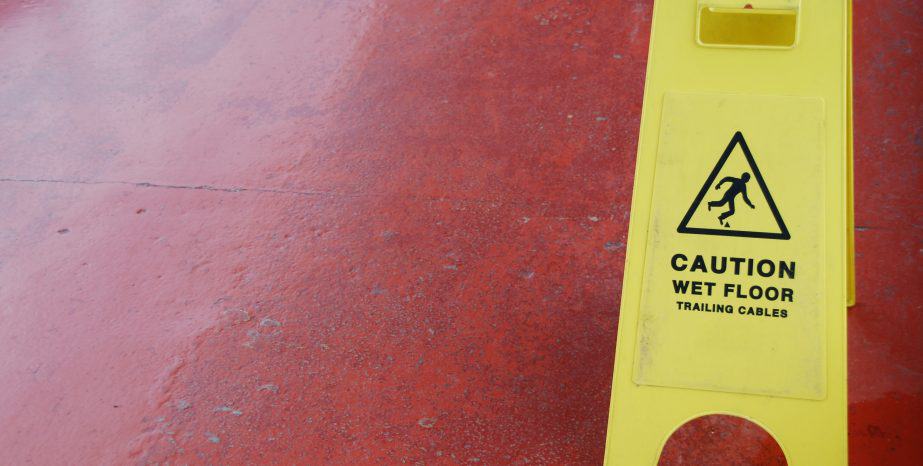
Slip and Fall Law Complexities
Personal injury cases occur when you are exposed to harm from an injury or an accident, due to someone else’s negligence or intentional conduct. With Personal Injury law, also tort law, you can seek legal remedies for the losses incurred from an accident or a slip. In California, the statute of limitation for personal injury cases is two years from the date of the accident. For government claims, the statute of limitations is 6 months.
Some of the situations that personal injury laws apply include defective products, intentional acts, accidents, medical malpractice, slip and fall accidents, wrongful death, and defamation.
Slip and Fall Accidents
Slip and fall refer to personal injury cases where you trip or slip and become injured on another person’s property. Such cases are under the premises liability claims category. The accident occurs on premises run or owned by another party, and it is possible to prove that the owner or manager is liable.
Certain conditions may indicate carelessness and irresponsibility on the part of the property owner. Torn carpets, narrow stairs, poor lighting, a wet floor, broken sidewalks, or changes in flooring can make someone slip or fall. Also, a slip and fall occur outdoors due to potholes, rain, or icy snow. In these instances, if you sustain injuries no matter how small you can build a case.
There is no standard procedure to determine when the other person is legally responsible for the harm suffered during the slip or trip. But, if it can be proven that would the property owner has taken particular measures to prevent the likelihood of the slip or fall occurring, then you have a motive. You have to prove that a dangerous condition contributed to the injury and that the premises owner was aware of it. The rules applicable in such cases are; the owner created the condition, knew of its existence but ignored it, and that it existed for a period which the owner should have rectified. The possessor is liable because of foreseen negligence that endangered your life.
You must show reasonableness in your case. One way to approach this is by finding out how long the defect was present before your accident happened. If it was present for over three months, then the chances of the owner knowing about it are higher. Alternatively, you can examine the cleaning activities that occur in the premise to show that at least one entity was aware of the defect before. Most property owners inspect facilities on a daily basis and are likely to notice any changes or places that need repair. If you trip over something put wrongly, you would have to collect enough evidence to strengthen your case.
You can also sue restaurants, stores, and other businesses if any of the above fit. In commercial property cases, the laws ascertain if the manager of the building took the initiative to ensure that the property is safe. Such cases have multiple entities. You can also call for action against your landlords if injured on rental properties and government properties. However, regarding public properties, there are rigid notice requirements and extended immunity clauses that relieve government agencies from responsibilities of injuries on state and federal properties.
Nevertheless, you must distinguish such accidents from simple accidents that may be caused by anything including personal carelessness. Most states have legislations apply the principle of comparative negligence. If you may have contributed to the accident to some extent, then the compensation may be reduced based on the degree to which you were at fault.
In some instances, you can pursue an informal settlement. Through attorneys representing all the parties involved, negotiation processes begin leading to an agreement that limits either side from undertaking further action. The parties will agree on the amount payable to the complainant as compensation.
You can file a complaint against the persons, corporation, business, or government claiming irresponsibility or negligence about the injury or accident. The statute of limitations states the period in which you can file a lawsuit. The statutes of limitations differ from one state to another and by the type of injury.
Most of the cases depend on the court decisions as the primary source of law rather than rules in statues. The judgments rely on common law rules; a judge’s decision on a particular matter of law creates precedence for cases tried in lower court. The Restatement of Torts has a collection of common law that provides reference during personal injury cases. Nevertheless, there are other alternatives to common law such as statutory laws passed by the state or federal government on personal injury law. The Workers’ Compensation Law caters for all work-related injuries cases.
A Slip and Fall Attorney That Can Help
Before filing the case, consult a professional to comprehend the processes, the laws, and the facts. Some questions may arise on the purpose of your visit to the premise, the probability of the accident occurring, the existence of a warning on the dangerous condition, activities you were engaging in before the incident and was the accident avoidable. An experienced personal injury attorney will assist you in your situation and fight for the compensation that you deserve. If you or a loved one were injured in an accident, contact an attorney to help you. Schedule a free initial consultation with a lawyer experienced in personal injury law. Contact the Law Offices of Sharona Eslamboly Hakim in Los Angeles County. Call 800-LAW-TALK (529-8255) or contact us online.
Sharona Hakim
Sharona Eslamboly Hakim, Esq. is a successful personal injury attorney and the principal of the Law Offices of Eslamboly Hakim firm in Beverly Hills, California.









